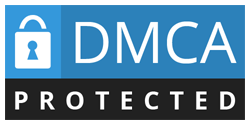There’s a newer buzzword that has become a popular idea in the world of data analytics. Data fabric is now a tool being used by data scientists and leaders in industries and organizations worldwide. It can be challenging to harness insights and analyze trends with information stored; in data lakes, data silos, data warehouses, and other data sources.
The idea of data fabric is that; leaders and staff need to have access to all data sources across the entire organization. It also uses a network-based architecture to create connections and weave together a system of data sources. The interwoven structure is where the term “fabric” comes from.
With the arrival of the Internet of Things (IoT), machine learning, massive amounts of unstructured data, and increased analytics complexity; there is a greater need for flexible data management solutions. Data fabric solutions furthermore help with semantically enriched data and access to multiple data sources.
Data fabric is a single environment that brings together a unified architecture and associated services and technologies; to aid data management. Also, data fabrics help to accelerate digital transformation by developing an intricate web of information. Let’s look at how a data fabric architecture can help with data access; and provide a competitive advantage to businesses and organizations.
What Is Data Fabric?

So, what is data fabric? The simple idea of data fabric is to create a “cloth” spread out over an entire organization. So, anyone under this cloth can have access to the host of data assets within the organization. With numerous data stores located in various locations, data fabric facilitates sharing data among business users and others; no matter where they are.
At a basic level; the purpose of data fabric is to provide an easier way to deal with massive amounts of enterprise data. Also, it does this by providing controlled access and separating data from the sources that create it. Data fabric restores control to data owners and makes it easier to retrieve and share data with collaborators.
Today, data is collected at an unprecedented rate. Consider the amount of data available; if you collected the dashboard information from every car on the road at every minute of the day. This is the amount of data that many industries and organizations are managing and analyzing. As a result, data silos, warehouses, lakes, and other storage sources are part of complex data management systems.
Data fabrics help unlock the big data; through secure, shared access without the need for copies that can threaten ownership and integrity. Data fabrics are creating virtual data centers that also allow access to the correct data at the right time.
Also Read: Decentralized Data Management in Microservices Applications
What Are The Benefits Of Data Fabrics?

As discussed, companies and organizations are harvesting and storing massive amounts of data today. With diverse data being stored in so many locations, data sharing and data discovery have become problematic.
Data fabrics help sort and share data and benefit organizations in a variety of ways. The most significant benefit is that data fabrics allow for handling extensive data sets across multiple locations more quickly. Additionally, data is more accessible with the integration of data silos and other storage sources across an environment.
By powering digital transformation efforts, data fabrics can make build times faster. It also gives data owners and other business users the ability to solve problems; and analyze trends in real-time by quickly providing access to all the correct data. This can also give any company or organization a competitive advantage in the data-dominant global market.
Creating a new data fabric comes with relatively no downtime and can be incorporated into any existing project. Data fabrics can also exist in tandem with legacy systems and grow organically with all future projects.
Data fabrics bring together data stores from numerous suppliers and locations to form a single platform for data management. An extensive range of businesses from industry to mass transportation are benefiting from data fabric solutions. Because, data fabric improves end-to-end performance, reduces cost and time, and simplifies infrastructure configuration and management.
Also Check: How Can Robotics and AI Assistance Help with Fintech and Data Science?
Images by Gerd Altmann, Pete Linforth and Okan Caliskan


Comments are closed.